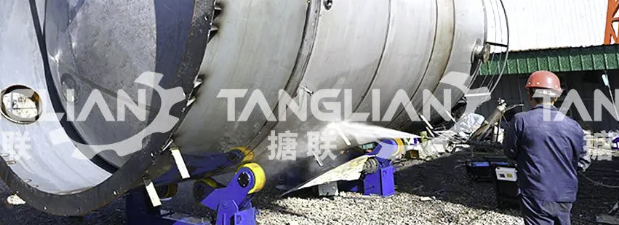Industry news
Reasons for slow reaction speed in high-pressure reactor
The high-pressure reactor is a special type of equipment that needs to be placed in a high-pressure operating room that meets explosion-proof requirements. At the same time, the high-pressure reaction kettle belongs to precision equipment, and the sealing ring adopts a conical contact sealing form. By tightening the main bolts, they are compressed against each other to achieve the purpose of sealing. The common problem with high-pressure reactors during use is slow reaction speed, even when the reaction stops. At this point, the catalyst must be filtered out and a new catalyst must be added to the filtrate to continue the reaction.
1. Impurities
Toxicants, insoluble substances, metal ions, and tar, excluding low molecular impurities, isomers, and solvent residues. Renee nickel generally has strong resistance to poisoning, mainly targeting palladium carbon. Toxicants mainly contain sulfur and phosphorus compounds, including various forms of substances containing sulfur and phosphorus elements. The pathways for introducing toxins include raw materials, solvents, reactors, and gases; Insoluble substances mainly include inorganic substances and polymers, which deposit on the surface of the catalyst, hindering the reaction site and slowing down the reaction; Metal ions are mainly heavy metals, such as copper ions, mercury ions, lead ions, and cadmium ions, which react with catalysts, thereby slowing down the reaction; The mechanism of action of tar is similar to that of insoluble substances, and it may also be generated during the reaction, so the reaction conditions should generally not be too high; The factor of impurities is difficult to analyze through instruments and must be verified through experiments, which is easily overlooked in catalytic hydrogenation.
2. Mixing type
Mainly due to the mixing effect of high-pressure reactor stirring on the bottom catalyst, the solubility of hydrogen in the solvent is relatively small, and the reaction system mostly exists in a gaseous state; The raw material is dissolved in a solvent and is liquid; The catalyst is solid. From a microscopic perspective, the reaction occurs on the surface of the catalyst, and good stirring can enable gaseous hydrogen to quickly pass through and react with the raw material on the catalyst surface, while taking away the product. During laboratory tests, magnetic stirring is often used. Due to the small amount and the effect of magnetic force on grinding the catalyst, the reaction is generally fast; During the pilot test, the pressure mixing reaction system under the push type stirring impeller achieved good results. Renee nickel is heavily influenced by stirring effects due to its weight; Palladium carbon has a relatively small impact due to the adsorption of palladium metal on activated carbon; In industrial production, the scale is larger, the stirring effect is poor, and the reaction is generally slower than the pilot test; Traditional anchor stirring has no direction and can be stirred normally in both directions; The push type stirring paddle has a direction, and the correct direction has a good stirring effect, while the opposite direction has a poor effect.

3. PH value
This factor is a key point that is easily overlooked when optimizing the catalytic hydrogenation process, and the pH value affects the reaction rate by affecting the catalyst activity. Reni nickel exhibits high activity under alkaline conditions, but poor activity under acidic conditions. The alkalinity of the reaction solution can be improved by adding amines; Palladium carbon has high activity under acidic conditions, but poor activity under alkaline conditions. The acidity of the reaction solution can be improved by adding acetic acid. The above acidity and alkalinity should not be too high, and strong acids and alkalis should not be used. It is necessary to consider the stability of high-pressure reactor equipment and its impact on post-treatment.
Categories
News
Contact Us
E-mail: service@chinareactor.com
Add: Hongshan Town Industrial Park, Chongzheng Road, Zichuan District, Zibo City, Shandong Province